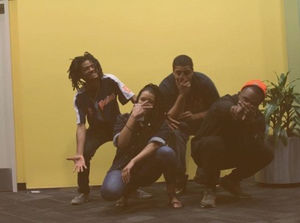The Importance of Art Activism
- Nicolette Rankin

- Apr 5, 2016
- 2 min read
“Art and social practice are about responsible investments in the community, said Wayne State Photography professor Marilyn Zimmerman, where you know and respect the story of the people that have lived and have a history of the community.” Professor Zimmerman also said that the people who live in the community are considered teacher, scholars, and storytellers and that it is an art activist’s responsibility to be the vehicle for the community’s needs. “As a future art activist, I feel that I can help people my age, people within my culture, and people who are also artists to enrich themselves and be an influence to others,” Wayne State Photography major Damon Adam. According to an independent blog called: “Activist Art: Art That Works” written by blogger and artist Helen Klebesadel , Art activist aim to address cultural, political and social concerns with a view to producing concrete social change. The specific purpose of an activist is to influence political, social, or cultural change and recognizing that the arts are vital social and economic drivers to communities, and critical to educating children with the skills they need to deal with a new globally engaged world. “Art and social practice is not the heroic version of the artist who is going to spread their particular point of view, it is a much more intersectional, cooperative, collaborative, invested practice that is about making this social structure moving forward together and as an educational tool and an empowerment tool, so that everyone moves forward,” said Professor Zimmerman. Arts and culture teach citizens to think critically and analyze social messages and determine the truth. Art can be the fuel that motivates other to share opposing beliefs and views in ways that teach them to understand their peers, and can help to define values in communities, and in a larger society. According to American anarchist and primitivist philosopher John Zerzan, who wrote “The Case Against Art, art turns the subject into a symbol and provides the medium of conceptual transformation by which the individual was separated from nature and dominated, at the deepest level, socially. Art's ability to symbolize and direct human emotion accomplished both ends. What is accepted as a necessity, in order to keep those oriented in nature and society, was at a base the invention of the symbolic world. Klebesadel stated that a key strategy in activist art is making various uses of public media. Wayne State Digital Media Professor and Filmmaker Kate Levy collaborated with American Civil Liberties Union of Michigan on a documentary about the Flint Water Crisis called Hard to Swallow: Toxic water under a Toxic system in Flint. Within this documentary, she provided interviews from the citizens affected, specific dates, and documentation regarding the Flint water crisis. She stated that her goal as a filmmaker was to expose the media for their lies. She stated that she made sure that her pursuit of justice is not mistaken as pursue justice. “My goal as a filmmaker is to allow people to tell their story,” said Levy.






Comments